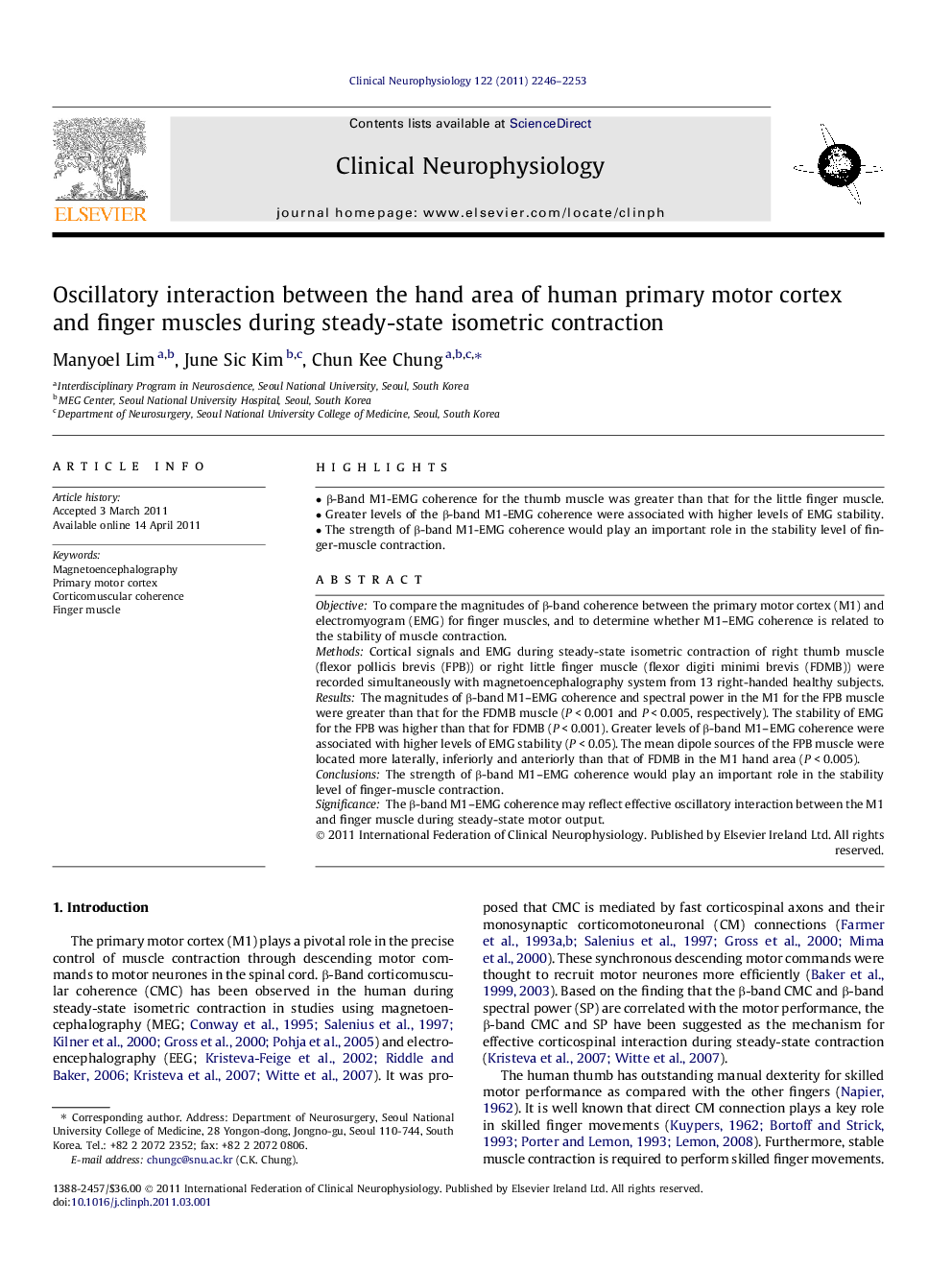| Article ID | Journal | Published Year | Pages | File Type |
|---|---|---|---|---|
| 3043803 | Clinical Neurophysiology | 2011 | 8 Pages |
ObjectiveTo compare the magnitudes of β-band coherence between the primary motor cortex (M1) and electromyogram (EMG) for finger muscles, and to determine whether M1–EMG coherence is related to the stability of muscle contraction.MethodsCortical signals and EMG during steady-state isometric contraction of right thumb muscle (flexor pollicis brevis (FPB)) or right little finger muscle (flexor digiti minimi brevis (FDMB)) were recorded simultaneously with magnetoencephalography system from 13 right-handed healthy subjects.ResultsThe magnitudes of β-band M1–EMG coherence and spectral power in the M1 for the FPB muscle were greater than that for the FDMB muscle (P < 0.001 and P < 0.005, respectively). The stability of EMG for the FPB was higher than that for FDMB (P < 0.001). Greater levels of β-band M1–EMG coherence were associated with higher levels of EMG stability (P < 0.05). The mean dipole sources of the FPB muscle were located more laterally, inferiorly and anteriorly than that of FDMB in the M1 hand area (P < 0.005).ConclusionsThe strength of β-band M1–EMG coherence would play an important role in the stability level of finger-muscle contraction.SignificanceThe β-band M1–EMG coherence may reflect effective oscillatory interaction between the M1 and finger muscle during steady-state motor output.
► β-Band M1-EMG coherence for the thumb muscle was greater than that for the little finger muscle. ► Greater levels of the β-band M1-EMG coherence were associated with higher levels of EMG stability. ► The strength of β-band M1-EMG coherence would play an important role in the stability level of finger-muscle contraction.
